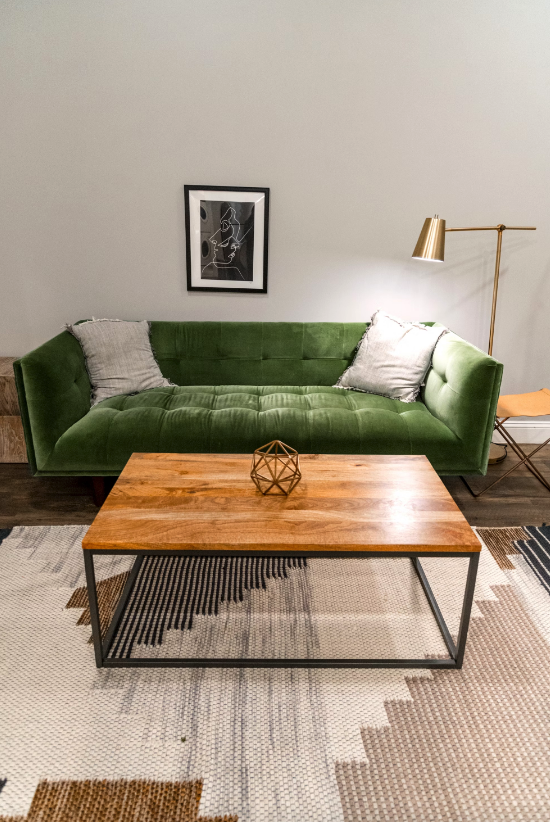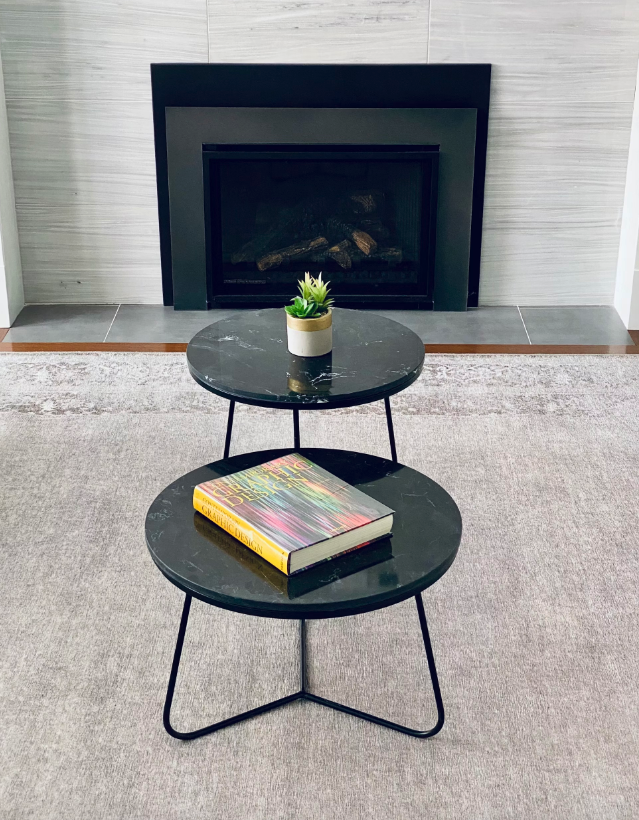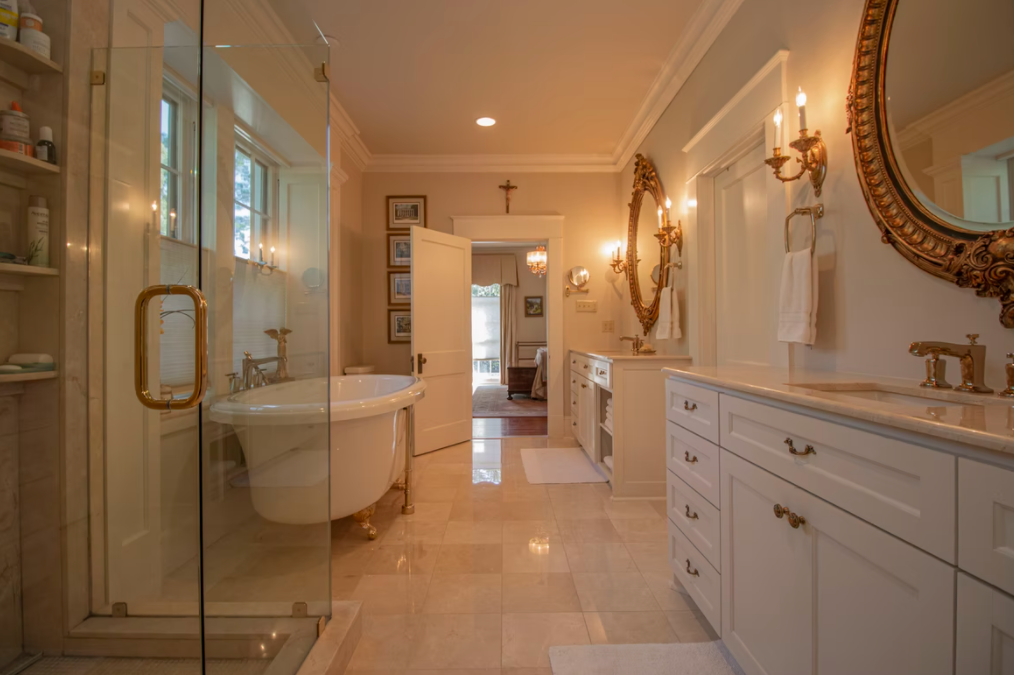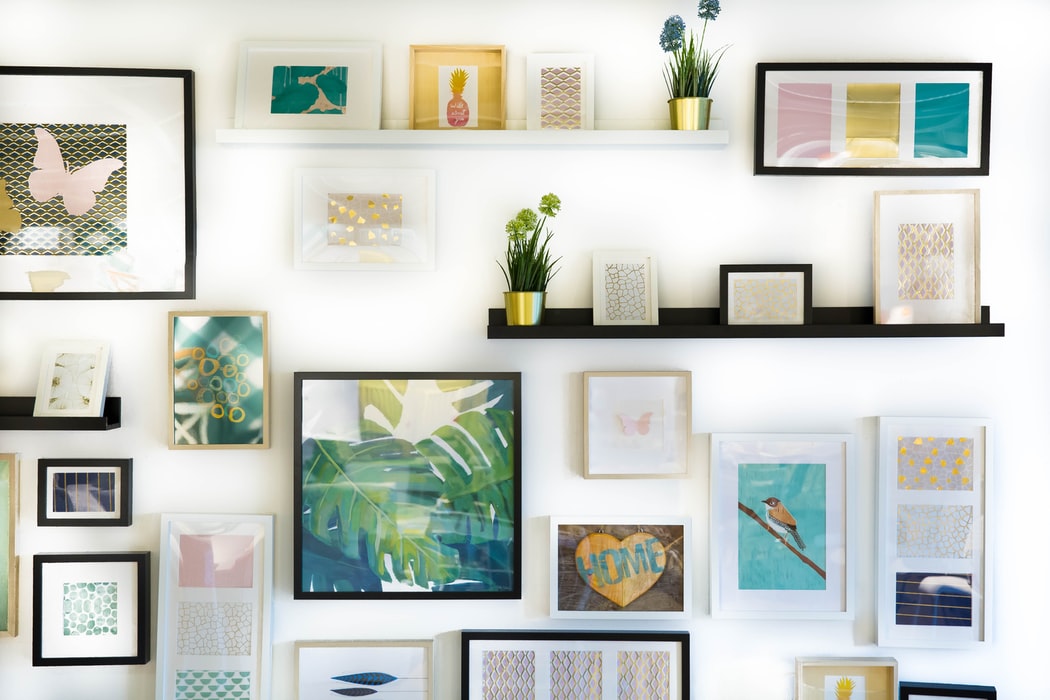Choosing the Right Surface for Your Contemporary Coffee Table
In the ever-evolving landscape of contemporary design, the coffee table serves as the living room’s anchor – a centerpiece that grounds a space and sets the tone for its aesthetic!

Yet, among the choices available, one element often overlooked is the profound impact of the surface material.
Think of your table as a blank canvas – the material you choose is the medium that will ultimately define its expression. A sleek marble slab exudes an air of sophistication, while a weathered wooden top whispers rusticity. The surface material isn’t just about aesthetics; it dictates how you use and interact with the table. Do you crave the cool touch of glass or the inviting warmth of wood? Perhaps the industrial edge of metal or the earthy allure of stone.
In this guide, we’ll venture past the obvious and delve into the nuances of coffee table surfaces. We’ll explore how your lifestyle, preferences, and maintenance commitment all play a part in choosing your material type.
Popular Material Choices
Wood
A timeless classic, wood brings a sense of warmth, history, and character to any living space.
- Oak: Known for its strength and durability, oak showcases prominent grain patterns. It ranges in color from light tan to reddish-brown, depending on the species and finish.
- Walnut: This rich, dark wood exudes luxury. Its smooth texture and deep chocolate hues create a dramatic contrast with lighter furnishings.
- Maple: A lighter option with subtle grain patterns, maple is a versatile choice that can be stained to achieve different shades or be left natural for a clean, modern look.
- Teak: Renowned for its weather-resistant properties, teak is exceptional for outdoor tables or spaces with high humidity. Its golden-brown tones and natural oils make it resistant to rot and decay.
The wood finish plays a crucial role in defining the table’s aesthetic. A natural finish highlights the wood’s inherent beauty, while stained or lacquered finishes offer a wider range of colors and protective coatings.
Metal
If you’re looking to infuse your living room with a touch of industrial chic or modern edge, metal is your go-to material. Its sleek, cool surface exudes an air of refinement complementing minimalist or contemporary interiors.
- Stainless Steel: The most popular choice for its durability and resistance to corrosion, stainless steel offers a clean can be polished to a high shine or brushed for a more subtle look.
- Brass: With its warm, golden tones, brass adds vintage glamour and develops a patina over time, deepening its character and charm.
- Copper: This reddish-brown metal is known for its antimicrobial properties and unique color, adding a warm, inviting glow to a space, pairing well with earthy tones or rich jewel colors.
- Aluminum: A lightweight and versatile option, aluminum is often used in outdoor furniture due to its rust resistance. It can be powder-coated in various colors for a customized look.
The finish of the metal also plays a role in its visual appeal. Polished metal surfaces reflect light and create a glamorous feel, while brushed or hammered finishes add texture and dimension.

Glass
For an airy, open feel, glass is favored for contemporary tables. Its transparent nature allows light to pass through, making a room feel larger and more spacious.
- Tempered Glass: This safety glass is heat-treated to make it stronger and more resistant to breakage. It’s a wise choice for households with children or pets.
- Laminated Glass: This type of glass consists of two or more layers of glass bonded together with a plastic interlayer. It’s even more durable than tempered glass and offers excellent sound insulation.
Glass coffee tables can be clear, tinted, or frosted. Clear provides an unobstructed view, while tinted or frosted provides privacy or diffuses light.
Stone: If you desire a unique table, stone is a compelling option. Each slab of marble, granite, or slate is a one-of-a-kind, showcasing intricate veining patterns and subtle color variations.
- Marble: This is known for its timelessness and luxurious appeal. Its cool, smooth surface produces complexity for any living room.
- Granite: A more durable and stain-resistant option, granite is prevalent in high-traffic areas. It comes in a wide range of colors and patterns, from speckled to solid.
- Slate: With its earthy tones and rugged texture, slate brings nature indoors. It’s a durable and low-maintenance option that pairs well with rustic or industrial setups.
For those seeking the beauty of stone without maintenance, engineered stone like quartz is a viable alternative. It offers the look of natural stone with enhanced durability and stain resistance.
Concrete: A relative newcomer to the coffee table scene, concrete has quickly become a favorite among those who appreciate industrial design. Its raw, unfinished look provides an urban edge complementing minimalist or eclectic interiors.
- Polished Concrete: This finish involves grinding and polishing the concrete to achieve a smooth, glossy look. It highlights the subtle variations in color and texture, creating a unique piece.
- Raw Concrete: For a more rugged and industrial feel, concrete can be left unpolished. This finish showcases the natural imperfections and porosity of the material, adding to its character.
Concrete coffee tables must be properly sealed to protect them from stains and moisture. With proper care, they can last, developing an exquisite patina over time.
Lifestyle, Aesthetics, and Care
Beyond visuals lies the practical considerations that often go unspoken. It’s crucial to align your material choice with your lifestyle, preferences, and upkeep obligations. Here’s how these factors intertwine:
Lifestyle: The Silent Partner in Your Decision
Active households with children or pets might gravitate towards resilient materials to withstand the wear and tear of everyday life. A sturdy wooden table can handle the occasional bump or scrape, while a metal surface can resist scratches from playful paws. If spills and sticky fingerprints are a concern, a non-porous material like glass or engineered stone might offer peace of mind with its easy-to-clean surface.
Aesthetics: The Art of Harmonious Coexistence
Your coffee table should seamlessly integrate into your living room aesthetic. A sleek, minimalist space might call for the cool of glass or understated polished concrete. A rustic retreat, on the other hand, might find solace in the warmth of reclaimed wood or the rugged texture of stone.
Contemporary Coffee Table Maintenance
Every material comes with its own set of care and keeping requirements. While some surfaces are low-maintenance and forgiving, others demand a bit more attention to preserve them. Consider your cleaning habits and lifestyle when choosing a material. If you’re not keen on frequent maintenance, opt for a surface that can resist the occasional spill or smudge without requiring extensive care.

Mixed Materials: A Symphony of Textures and Tones
Gone are the days of monolithic material choices. Today, designers and homeowners alike are embracing juxtaposition by combining diverse materials in a single table. A union of wood and metal forms a harmonious mix of warmth and industrial edge, while a fusion of stone and glass exudes opulence and airiness.
Consider a sleek marble top resting atop a geometric base of blackened steel, or a live-edge wood slab integrated with a brass frame. These unexpected pairings add visual interest and tell a unique story, reflecting the tastes and discerning eye of the homeowner.
Sustainable Options: A Nod to Mother Nature
As environmental awareness grows, so does the demand for sustainable materials in home furnishings. Coffee tables are no longer just about style; they’re also about making conscious choices that benefit the planet.
Reclaimed wood, salvaged from old buildings or discarded furniture showcases a weathered patina and unique character adding history and authenticity to living spaces. Recycled metal, sourced from scrap yards or industrial waste, offers a similar appeal, transforming discarded materials into functional works of art. Bamboo, a rapidly renewable resource, is popular for its strength and eco-friendliness. Cork, another sustainable material, offers a texture and natural warmth.
Final Thoughts
As we’ve journeyed through the range of surfaces for contemporary coffee tables, we’ve unearthed options, each with its distinctive allure and considerations. We’ve discovered the timelessness of wood, the industrial chic of metal, the airy nature of glass, the appeal of stone, and the urban edge of concrete. We’ve delved into mixed materials and sustainable alternatives, revealing the possibilities for innovation.
We’ve explored the importance of aligning your material choice with your lifestyle and maintenance choices. A coffee table that complements your daily routines and fits into your cleaning habits is a table we all need. Embrace the diversity of materials available, explore the emerging trends, and don’t be afraid to experiment. Your table isn’t just a functional piece; it’s a canvas for creativity and a conversation starter.








